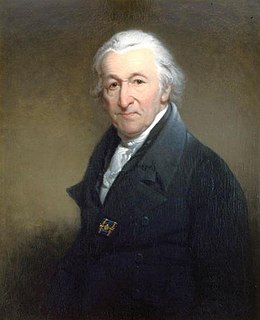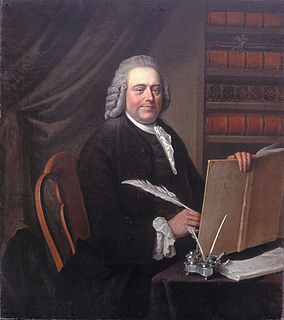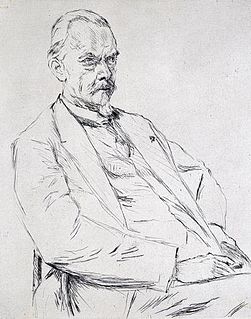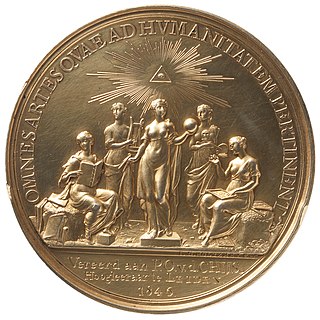History
The society was founded in 1778, and the first five members were appointed through Teylers testament: two remonstrant preachers and three Baptist preachers. As stipulated, there had to be six members, and the sixth member was selected by the first five, and was the baptist Frederik Scheltinga. The society had also a sister society, Teylers Tweede Genootschap - which focused on art and science but is organized in a similar way.
The main activity of the society is to discuss theological issues, and annually announce contests with a relative high prize compared to similar contests by other societies (400 guilders for the 1778 edition). The prizes were awarded by the members of the society and the directors of the foundation jointly.
Essay competitions: procedure
Especially in the early years, when the questions were less conservatively focused, the amount of replies was high [1] because of the high prize associated with winning it. Until 1796 the answers had to be submitted in Latin, Dutch or French, after 1796 also English and German were allowed. The name of the submitting author was only available in a sealed envelope, which was linked to the piece and would only be opened in case the piece would win the contest. All other envelopes were burned unopened - and their replies archived anonymously. The winner receives a silver or gold medal or a sum of money and its submission was published in the Verhandelingen van Teylers Eerste Genootschap (Proceedings of Teylers First Society).
The most recent contest is from 2011, asking for "research on the formation and/or change of the Dutch perception of Islam in the years 1990-2010" which will run through 2014. [4] A contest typically runs for three years at a time - hence multiple contest can be active at any given moment.
The society meets annually in the Kleine Herenkamer (Small Boardroom) in the Teylers Fundatiehuis (Teylers Foundation House) next to the Teylers Museum.

Teylers Museum is an art, natural history, and science museum in Haarlem, Netherlands. Established in 1778, Teylers Museum was founded as a centre for contemporary art and science. The historic centre of the museum is the neoclassical Oval Room (1784), which was built behind the house of Pieter Teyler van der Hulst (1702–1778), the so-called Fundatiehuis. Pieter Teyler was a wealthy cloth merchant and banker of Scottish descent, who bequeathed his fortune for the advancement of religion, art, and science. He was a Mennonite and follower of the Scottish Enlightenment.

Jhr. Rhijnvis Feith was a Dutch poet.

Martin(us) van Marum was a Dutch physician, inventor, scientist and teacher, who studied medicine and philosophy in Groningen. Van Marum introduced modern chemistry in the Netherlands after the theories of Lavoisier, and several scientific applications for general use. He became famous for his demonstrations with instruments, most notable the Large electricity machine, to show statical electricity and chemical experiments while curator for the Teylers Museum.

Pieter Teyler van der Hulst was a wealthy Dutch Mennonite merchant and banker, who died childless, leaving a legacy of two million florins to the pursuit of religion, arts and science in his hometown, that led to the formation of Teyler's Museum. This was not the value of his entire estate. He also founded Teylers Hofje in his name, and made important donations to individuals in the Mennonite community.

Cornelis Hofstede de Groot, was a Dutch art collector, art historian and museum curator.

Adriaan van der Willigen was a Dutch writer of plays and travelogues who is mostly remembered today for his comprehensive list of painter biographies.

The Fundatiehuis is the former family home of Pieter Teyler van der Hulst on the Damstraat 21 in Haarlem, Netherlands. After his death it became the seat of the Teylers Stichting and through its front door, visitors could reach the Oval room.

The Teylers Stichting is a Dutch foundation founded with the heritage of the Dutch 18th century cloth merchant and banker Pieter Teyler van der Hulst to support the people in need and encourage worship, science and art.

Jacobus Barnaart was a Dutch merchant and one of the five first directors of the Teylers Stichting.

Johann Georg Holtzhey, was an 18th-century Dutch medallist and mint master.

Teylers Tweede Genootschap, also known as the Wetenschappelijk Genootschap is one of the two societies founded within the Teylers Stichting with the purpose to promote and award prizes for research. They were the result of the testament of the Dutch 18th-century merchant Pieter Teyler van der Hulst. The Second Society is focused on art and science, while the First Society is focused on theology.

The Eerste Schilderijenzaal, or Painting Gallery I, is one of two art gallery rooms in Teylers Museum and is the oldest art gallery for contemporary Dutch art in the Netherlands. It was built onto the back of Teylers Oval Room in 1838. It was the young museum's first exhibition space for paintings and could be entered through the Oval Room, which was itself located behind the Fundatiehuis, the former home of Pieter Teyler van der Hulst.

The Tweede Schilderijenzaal, or Painting Gallery II, is one of two art gallery rooms in Teylers Museum. The Tweede Schilderijenzaal was built in 1893 as an extension of the first gallery.

The Instrument Room is a room in Teylers Museum which houses a part of the museum's Cabinet of Physics: a collection of scientific instruments from the 18th and 19th centuries. The instruments in the collection were used for research as well as for educational public demonstrations. Most of them are demonstration models that illustrate various aspects of electricity, acoustics, light, magnetism, thermodynamics, and weights and measures. The rest are high-quality precision instruments that were used for research.

Abraham de Vries was a Dutch Mennonite minister, author on literature and member of several societies.

Klaas Sybrandi, also spelled as Sijbrandi, was a Dutch Mennonite minister, author, translator and involved with several societies and foundations.
Rinse Koopmans was a Dutch Mennonite teacher and minister.

Jacob Gotfried Haafner was a German-Dutch travel writer who lived in and wrote extensively on India and Sri Lanka. His travelogues were noted for their Romantic undertones, lively descriptions of Indian cultures and peoples, as well as criticisms of European colonialism, slavery, and cultural domination.
This page is based on this
Wikipedia article Text is available under the
CC BY-SA 4.0 license; additional terms may apply.
Images, videos and audio are available under their respective licenses.
















